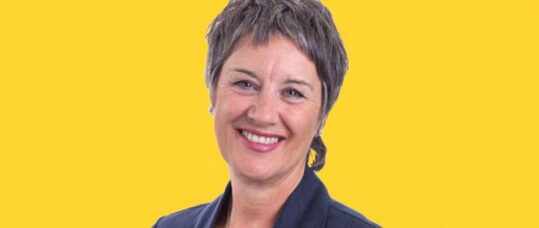We cannot ignore our suspicions

Child sexual exploitation (CSE) is now widely and openly recognised as an evil that society must address. Just last week another successful prosecution of a child sex grooming and abuse ring in Newcastle confirms the issue is not uncommon in UK towns.
In May, a TV drama depicting the sexual exploitation of young girls in Rochdale in 2012 brought the issue into our homes. Interestingly, the tenacity and evidence of the nurse that secured those Rochdale convictions is outlined in a recent Nursing in Practice interview, making riveting reading that will touch every nurse.
Related Article: Call for nurses to be central to a potential ‘Operation Paramount’ roll-out
The nursing profession, along with other public services, have always played a significant role in righting society’s wrongs – traditionally, think safeguarding of children and vulnerable [often elderly] adults, domestic violence, neglect and child prostitution. Over the last two decades youth radicalisation, forced marriage, slavery, trafficking and female genital mutilation joined the list – and now child sexual exploitation.
Like it or not, confident or not, clinically linked or not, nursing has a role in the identification of those at CSE risk and the potential to witness disclosure by victims. I don’t mean just through our professional code but through nursing integration in all communities regardless of colour, creed, class or wealth. As citizens and professionals we cannot ignore the signs, the rumours and the suspicions that we’re faced with, hard as that might be. The roles and services we undertake mean nurses will be exposed to victims of CSE and grooming that have recognised clinical and behavioural indicators.
For example, general practice seeing UTIs, pelvic inflammatory disease and depression; family planning services for postcoital contraception or repeat pregnancy testing; school nurses will be alert to school absences, self-harm, deteriorating self-esteem or poor hygiene; STI services will recognise repeat attenders; A&E and walk-in centres will face alcohol and substance abuse in young people often accompanied by older ‘friends’; health visitors, mental health and community outreach nurses have special relationships and access to homes, being aware of chaotic lifestyles and dysfunction relationships some youngsters are exposed to.
Related Article: NHSE to ‘test’ use of health visitors in giving childhood flu vaccines
Evidence indicates that CSE victims need a trusting relationship built up over time, with a trusted person, in a safe place to disclose the position they are in. Initially they may not recognise that they are being groomed or exploited for sex, later becoming trapped through fear or having their behaviour exposed to their family.
Nurses have a key role. Disclosers require a familiar, non-judgemental, compassionate, unshockable nurse with privacy and sufficient uninterrupted time who listens, believes the victim and understands their national safeguarding responsibilities. They also need a supporting line manager and a safeguarding lead that facilitates the multi-agency information sharing and statutory safety plan. Is that you? Do you recognise that as any nurse you know? Do you know who your safeguarding lead is? You should.
Related Article: Children born to women with obesity have higher risk of infection
With this latest successful prosecution of a sex grooming gang, the might of all agencies are re-energised in reviewing how we can protect our vulnerable citizens. Health must play its part. With escalating nurse shortages, burnout and service cutbacks, I suspect disclosers may not always get the CSE heroes they deserve.
I want to be wrong – so please tell me your workplace is building your confidence and skills to tackle this challenge.

See how our symptom tool can help you make better sense of patient presentations
Click here to search a symptom


Like it or not, confident or not, clinically linked or not, nursing has a role in the identification of those at CSE risk and the potential to witness disclosure by victims.



